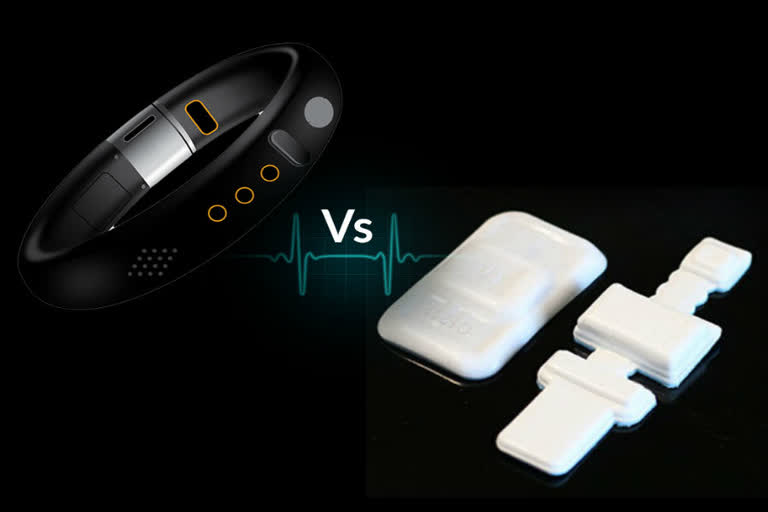EVANSTON, Ill. -- Although it might be tempting to rely on your fitness tracker to catch early signs of COVID-19, Northwestern University researchers caution that consumer wearables are not sophisticated enough to monitor the complicated illness.
The Northwestern team, led by bioelectronics pioneer John A. Rogers, published a perspective in the journal Science Advances, in which they differentiate between popular consumer electronics and clinical-grade monitoring systems.
Rogers co-authored the perspective with Dr. Shuai Xu, a Northwestern Medicine dermatologist, and Hyoyoung Jeong, a postdoctoral fellow in the Rogers lab.
Also Read: ISRO: Images of Phobos, the closest and biggest moon of Mars have been captured by MCC
According to the Journal of the American Medical Association, the three most important early symptoms for COVID-19 are fever, shortness of breath, and coughing," Rogers said. "For wearable technology, you want to track those key symptoms. A conventional wearable device, such as a fitness tracker, sits on the wrist or finger -- not the anatomical location that is most relevant to COVID-19."
This past spring, the Rogers group and researchers at Shirley Ryan Ability Lab introduced a novel wearable device and set of data algorithms specifically tailored to catch early signs and symptoms associated with COVID-19 and to monitor patients as the illness progresses. About the size of a postage stamp, the soft, flexible, wireless device sits just below the suprasternal notch, the visible dip at the base of the throat -- an ideal location for monitoring respiratory health.
Also Read: Features, Specifications, Price, Updates of OnePlus 8 and OnePlus 8 Pro, flagships phones of OnePlus
More recently, Rogers' team added a wearable, flexible pulse oximeter to pair with the suprasternal-mounted device. This allows physicians to continuously monitor for silent hypoxia, an often asymptomatic feature marked by alarmingly low blood oxygen levels. Adding this feature will help the device, and accompanying algorithms, give a fuller picture of the disease's onset, progression and response to treatment.
"The device measures very tiny vibrations on the skin and has an embedded temperature sensor for fever," Rogers said. "As you cough and breathe, it counts coughs, monitors the intensity of cough and senses labored breathing. The location on the throat also is close enough to the carotid artery that it can measure mechanical signatures of blood flow, monitoring heart rate."
"This sensor system targets key symptoms for COVID-19, with the goal to identify the infection earlier in patients," Xu said. "It's a suite of clinical-grade sensors wrapped into one small device. And once it's placed on the throat, people don't even realize that it's there."
Differences between COVID-19 patients and healthy controls
- Since launching the device in April, the team has tested it on 52 COVID-19-positive physicians, nurses, rehabilitation specialists and patients at Shirley Ryan AbilityLab and Northwestern Memorial Hospital. The device was tested both in the hospital and in the home.
- From these tests, Rogers and his team have collected 3,000 hours of data, which will continue to strengthen the device's algorithms. Eventually, the machine-learning algorithms will become smart enough to distinguish between a COVID-like cough and more benign coughs from allergies, colds or dryness. The team expects to test 500 subjects by the end of the year.
- Stamp-sized device comprises a suite of clinical-grade sensors, including temperature and pulse oximetry
- Device sits at the base of the throat to pick up vibratory signatures of breathing, coughing, swallowing
- Since developing the device, researchers have tested it on more than 50 physicians, rehabilitation specialists and patients at Shirley Ryan AbilityLab and Northwestern Memorial Hospital
- Researcher: 'We are already seeing clear vital sign differences collected by the sensor between patients with COVID-19 and healthy-matched controls'
- The research group has partnered with BARDA to continue developing and deploying the device to help fight the pandemic
Also Read: Indians can Use 'It's Between You'. first brand campaign by WhatsApp, to communicate with family & friends and to connect with a business



